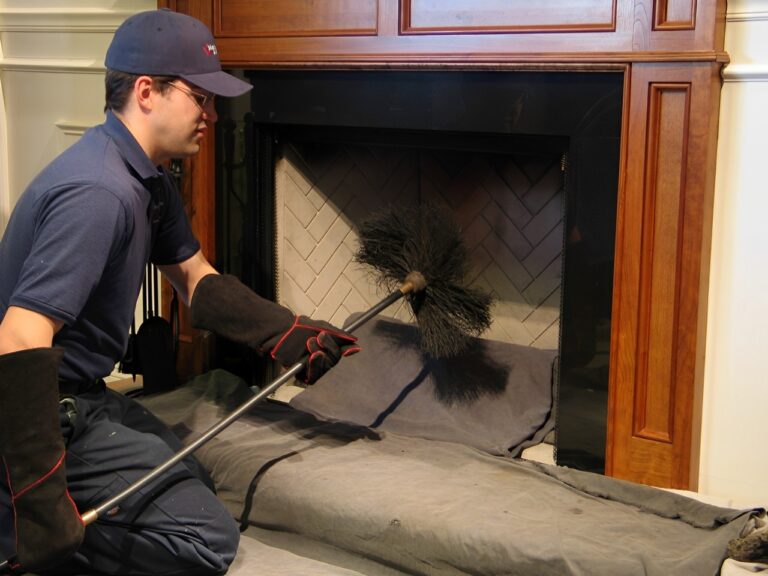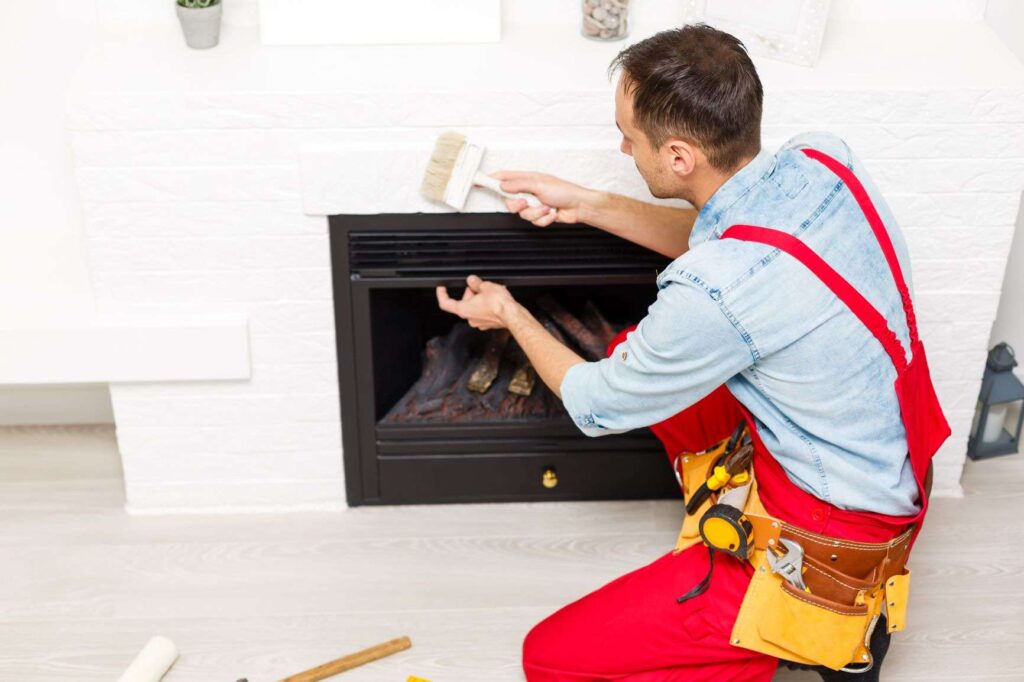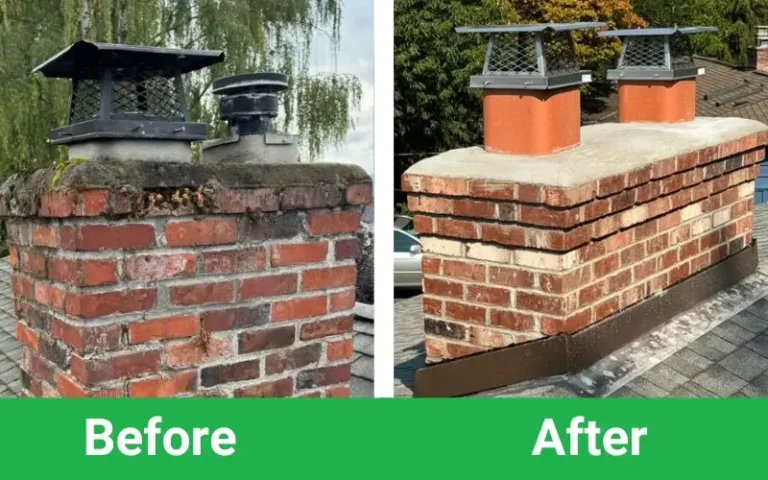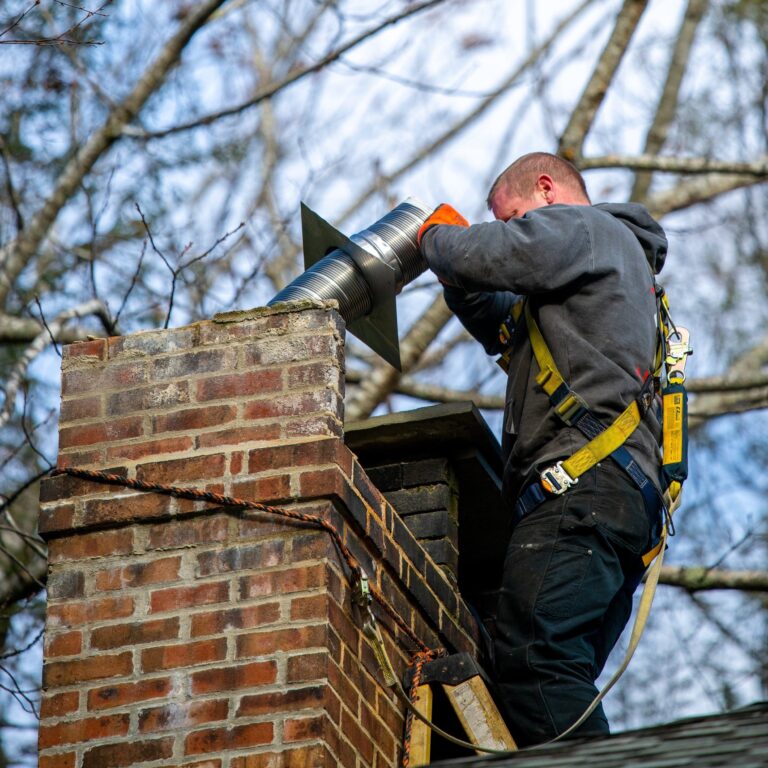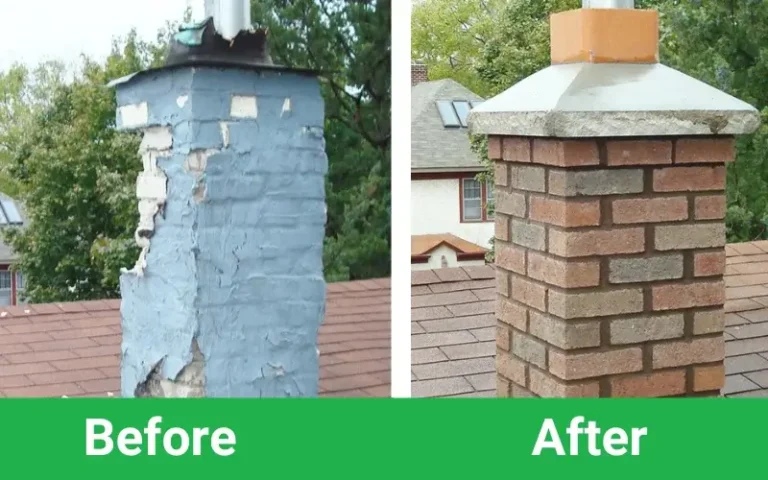Signs of Chimney Flue Damage
It’s important to recognize the early warning signs of chimney flue damage so you can address problems before they worsen. Here are some telltale indicators that your chimney flue may be compromised.
Difficulty in Starting Fires, Backdrafts, and Smoky Rooms
If you find it harder to start a fire in your fireplace, or if your room fills with smoke shortly after lighting a fire, your chimney flue may be blocked or damaged. Poor airflow caused by a blocked flue can make it difficult for fires to burn efficiently and can result in smoke entering your home instead of exiting through the chimney. In extreme cases, you might experience backdrafts, where cold air pushes smoke and gases back into your living space.
If you notice these issues, it’s crucial to contact a professional for chimney services in Mason, WA to diagnose and fix the problem. Ignoring airflow issues can lead to long-term damage and pose serious safety risks.
Cracked Flue Tiles or Damaged Liner
Another clear sign of a damaged chimney flue is cracked or missing flue tiles. You may notice small pieces of tile falling into your fireplace, which is a strong indication that the chimney liner is deteriorating. A damaged chimney liner can’t protect your home from the intense heat of a fire, increasing the risk of a chimney fire. Additionally, cracks in the flue allow toxic gases like carbon monoxide to leak into your home, which can be deadly if not addressed.
If you see any signs of flue tile damage or suspect your chimney liner is compromised, contact a professional immediately for an inspection and chimney repair.
Dangers of a Damaged Flue
Failing to repair a damaged chimney flue can have serious consequences for both your health and your home’s safety. Here are the two most significant dangers:
Carbon Monoxide Poisoning
One of the most dangerous risks of a damaged chimney flue is carbon monoxide poisoning. Carbon monoxide (CO) is a colorless, odorless gas that is produced when fuel is burned. Under normal conditions, CO is safely vented out of the home through the chimney. However, if the chimney flue is damaged or blocked, CO can accumulate indoors, posing a life-threatening risk to anyone in the home.
Symptoms of carbon monoxide poisoning include headaches, dizziness, nausea, confusion, and, in severe cases, unconsciousness or death. This is why ensuring your chimney flue is in good working order is critical, as even a small amount of carbon monoxide exposure can be deadly.
Increased Fire Risk
A damaged chimney liner can increase the risk of a chimney fire, which can be devastating. Cracks or gaps in the liner allow heat, smoke, and embers to escape into areas they shouldn’t, potentially igniting the surrounding structure of the chimney or the home itself. Chimney fires burn at extremely high temperatures and can spread quickly, causing significant property damage in a matter of minutes.
To prevent these risks, it’s vital to schedule annual chimney services that include inspections of the chimney liner and chimney cap. Regular maintenance and
chimney repair services can catch issues before they become dangerous.
Chimney Flue Repair Process
If you suspect damage to your chimney flue, the first step is to have a professional inspect your chimney and determine the extent of the problem. The good news is that most chimney flue issues can be repaired, and the process is fairly straightforward when handled by an experienced technician.
Inspection and Identification of Damage
A certified chimney technician will begin by conducting a thorough inspection of your chimney, using specialized tools such as cameras to examine the interior of the flue. This allows them to detect any cracks, blockages, or other damage that might not be visible from the outside. After the inspection, they’ll provide you with a detailed report on the condition of your flue and recommend the appropriate repairs.
Techniques Used to Repair or Reline the Flue
Depending on the severity of the damage, your chimney technician may recommend repairing or relining the chimney flue. Minor cracks can often be sealed with special heat-resistant materials, restoring the integrity of the chimney liner. If the damage is more extensive, the flue may need to be relined entirely. This involves installing a new chimney liner to ensure the chimney can safely vent smoke and gases. Chimney repair professionals use a variety of materials for relining, including stainless steel, cast-in-place liners, or clay tile liners, depending on the specific needs of your chimney.
When Should You Replace the Flue?
While most flue issues can be repaired, there are situations where a full replacement of the chimney flue is necessary. If the damage is extensive, repairing the flue may not be enough to ensure safe and efficient operation.
Signs That Indicate a Full Replacement Is Necessary
If your chimney has suffered significant structural damage, a full flue replacement may be the best option. Signs that you may need to replace the flue include:
- Large sections of missing or broken flue tiles
- Severe creosote buildup that cannot be safely removed
- Significant cracks or gaps in the chimney liner
- Structural damage to the chimney itself
In these cases, relining the flue may not be sufficient, and a full replacement may be necessary to restore safe airflow.
Comparing Repair Costs vs. Replacement
It’s important to consider the long-term costs when deciding between chimney repair services and a full replacement. While repairing small cracks and addressing blockages can extend the life of your chimney for several years, a full replacement may be more cost-effective in the long run if the damage is severe. A professional chimney technician will help you weigh the costs and benefits of each option based on your specific situation.
Conclusion
Maintaining the health of your chimney is crucial for the safety and comfort of your home in Mason, WA. Ensuring that your chimney flue is in good condition allows your fireplace to operate efficiently while protecting your home from the risks of carbon monoxide poisoning and chimney fires. Regular chimney services in Mason, WA, including inspections, cleaning, and repairs, can prevent flue damage and extend the life of your chimney.
At
Chimneyz, we’re committed to providing expert chimney services that keep your home safe and your fireplace running smoothly. Whether you need a routine inspection or extensive chimney masonry repair, our team is here to help.
Frequently Asked Questions
What is a chimney flue, and why is it important?
The chimney flue is the passage inside your chimney that allows smoke and gases to exit your home safely. It ensures proper ventilation and prevents harmful substances like carbon monoxide from accumulating indoors.
How often should I have my chimney flue inspected?
We recommend having your chimney flue inspected at least once a year as part of your regular chimney service routine. This helps catch any issues early and ensures your chimney is safe to use.
What are common signs of a damaged flue?
Some signs of a damaged flue include difficulty starting fires, backdrafts, excess smoke in your home, and cracked flue tiles. If you notice any of these, it’s time to schedule an inspection.

